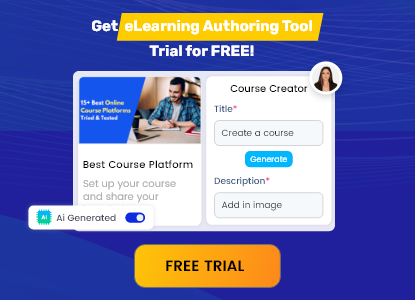The Rise of AI Authoring Tools
With the advancement of artificial intelligence (AI), AI authoring tools have emerged as game changers. Unlike traditional tools that require extensive manual input, AI-powered tools leverage automation, adaptive learning, and smart content generation to make course development faster and more efficient. AI-driven tools use machine learning algorithms to analyze existing learning materials, suggest content improvements, and even generate quizzes or assessments automatically.
Why This Comparison Matters
Choosing between AI authoring tools and traditional tools is crucial for organizations, educators, and instructional designers. The right tool can streamline course creation, enhance learner engagement, and reduce workload. In this article, we will compare AI authoring tools vs. traditional tools to determine which is better for different use cases. Understanding the differences can help businesses and educators choose the right solution for their training and learning needs.
What Are AI Authoring Tools?
An AI authoring tool is a software solution that uses artificial intelligence to assist in course creation. These tools leverage machine learning, natural language processing (NLP), and automation to generate, organize, and personalize learning content with minimal human intervention. They analyze existing content and make recommendations for structuring, improving, and adapting learning materials based on learners’ needs.
Key Features of AI-Powered Authoring Tools
- Automated content generation – AI can generate quizzes, assessments, and summaries instantly, reducing manual work and increasing productivity.
- Adaptive learning – AI-driven personalization tailors content to individual learners by assessing their progress and adjusting the difficulty level accordingly.
- Smart automation – Reduces the time and effort required for course development by automating repetitive tasks such as content formatting and structuring.
- Data-driven insights – AI analyzes learner interactions to optimize content effectiveness by identifying knowledge gaps and recommending improvements.
Examples of Popular AI Authoring Tools
- Cognispark AI – AI-powered tool that generates interactive courses instantly, simplifying the course creation process.
- Adobe Captivate – Offers automation and smart templates to enhance eLearning content creation.
- Dominknow ONE – Uses AI for adaptive learning and content recommendations, making learning more personalized and effective.
What Are Traditional Authoring Tools?
Key Features of Traditional Authoring Tools
- Full creative control – Developers have complete authority over design and customization, ensuring that courses align with brand identity and learning objectives.
- Manual content creation – Requires significant effort in structuring and curating learning content, making the process more time-consuming compared to AI tools.
- Limited automation – Does not offer AI-powered features for personalization or adaptive learning, meaning learners receive a standardized experience rather than a tailored one.
Examples of Popular Traditional Authoring Tools
- Articulate Storyline – A widely used tool for manual course creation, known for its interactivity and flexibility.
- Lectora Inspire – Offers robust customization features and is ideal for compliance training and large-scale learning projects.
- iSpring Suite – Provides PowerPoint-based course creation with no AI integration, making it a user-friendly choice for those familiar with Microsoft Office.























